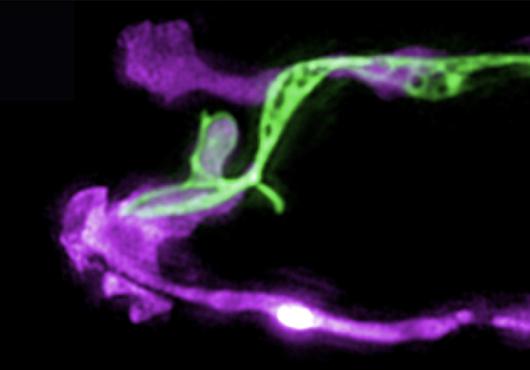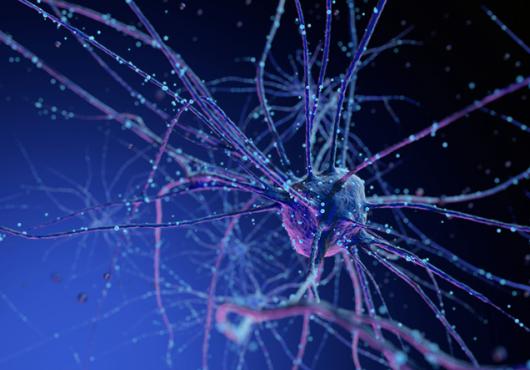
Life sometimes takes an unexpected turn, whether you’re a scientist or a nematode.
Take, for example, the curveball thrown to graduate student Candice Yip when she set out to study nerve growth in the head of Caenorhabditis elegans and instead discovered how an abnormal number of sensory neurons share space throughout the tiny worm’s body.
The unexpected finding led Yip and principal investigator Max Heiman, assistant professor of genetics and pediatrics at Harvard Medical School and Boston Children’s Hospital, to an insight into how organisms can co-opt existing genes for new purposes.
Get more HMS news here.
“This study has shown us how a phenomenon called dendrite tiling works,” said Heiman. “But it has also told us how you can make a major manipulation to an incredibly intricate machine like the nervous system and it doesn’t just become a mess. There are underlying pathways that keep everything in order.”
The researchers’ discoveries, published May 26 in Cell Reports, support the theory that the complex patterning of cells in the nervous system and other organs arises from simple rules rather than adherence to a deterministic, connection-by-connection diagram.
The findings could also provide insight into how changes in these rules might lead to faulty wiring of the human brain in neuropsychiatric diseases.
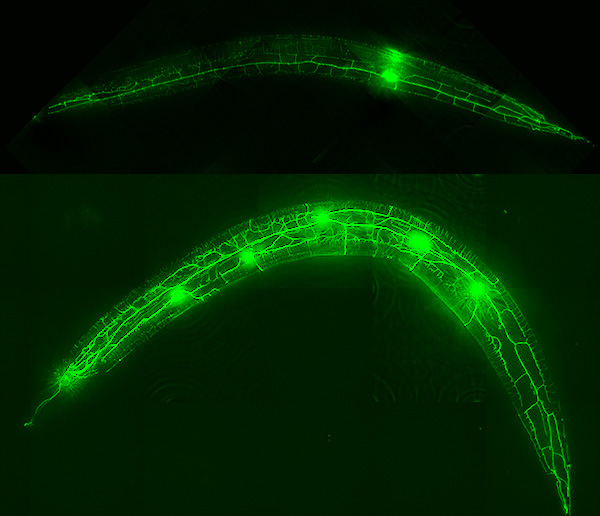
Yip began by inducing random genetic mutations to see if the neuron she intended to study changed shape. However, she began to notice that a different set of neurons called PVD neurons were strikingly altered in some worms.
C. elegans usually has one PVD neuron on each side of its body that senses harsh touch. Worms with a particular genetic mutation had five on each side.
Heiman and Yip were curious about whether the shapes of PVD neurons changed when four extra ones crowded in. Did their long, branching dendrites intermingle from head to tail, or did each neuron carve out a non-overlapping space of its own?
There was just one challenge standing in the way of finding out.
“Other researchers had noticed this mutation before, but no one had been able to visualize the neurons individually,” said Heiman.
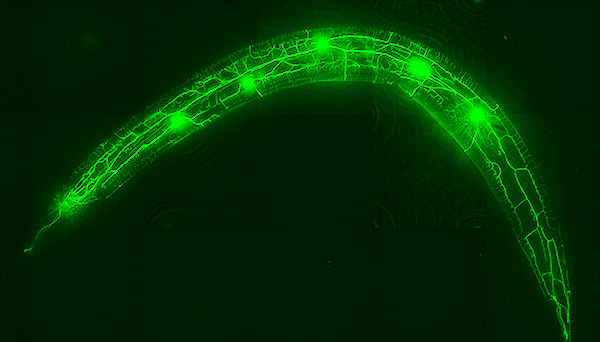
Yip solved the problem by engineering the neurons to express a color-changing label.
She briefly shone light on the main cell body of just one of the five neurons in each worm and waited. Within two hours, that neuron and all its dendrites turned red while the other four remained green.
The results revealed that the neurons didn’t overlap. Why didn’t they?
In other organisms, neighboring neurons of the same type use certain molecules to tell one another to maintain a comfortable distance, like squabbling siblings who draw an invisible line between them that neither is allowed to cross. Scientists suspect this so-called dendrite tiling gives organisms a more specific idea of where a sensory signal originated.
But C. elegans is unusual: It lacks a mechanism for tiling because it normally has only one PVD neuron per side.
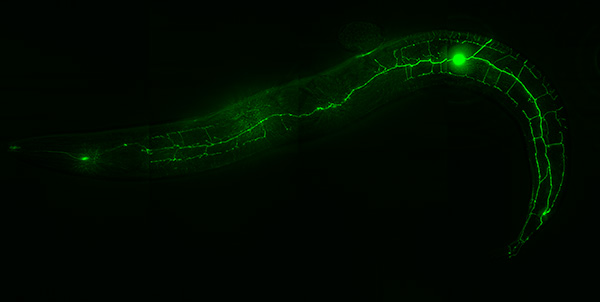
Maybe the extra neurons were simply sick and small and couldn’t extend the length of the worm’s body, thought Yip.
Yet when she destroyed four of the five neurons, the fifth grew to fill the empty space.
Somehow, the neurons were setting boundaries with one another.
Although C. elegans hasn’t evolved a mechanism for keeping PVD neurons apart, it does employ a self-avoidance signal to prevent a single neuron’s dendrites from overlapping with one another. Heiman and Yip wondered whether the molecule that sends this signal, called netrin—a major player in patterning nervous systems across organisms—could have been pressed into service to wrangle the extra neurons.

Sure enough, when Yip genetically tweaked the worms so they had little or no netrin or lacked receptors to detect netrin, the dendrites from the five neurons stopped obeying their space restrictions and grew entangled.
“I think the cool part of this is seeing that an organism can make a pattern by using an existing mechanism that wasn’t evolutionarily selected to make that pattern,” said Yip.
“There are a lot of suggestions that dendrite tiling emerges from simple principles—‘If you touch someone that looks like you, stay away’—rather than from a molecule telling neuron 160,000 to connect to neuron 60 million and so forth,” said Heiman. “C. elegans provides a clear example supporting the emergence model.”
“I believe that what we’ve seen here will be relevant to understanding the development of any kind of complex system in an organism,” he said.
Yip was supported by a National Science Foundation graduate research fellowship and an Alfred J. Ryan Foundation fellowship. Additional support for the paper was provided by the Harvard Open-Access Publishing Equity (HOPE) fund, which reimburses “reasonable” processing fees for articles that are authored or co-authored by Harvard researchers and published in eligible open-access journals and for which no alternative funding is available.

